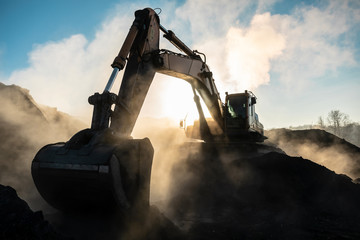Whether building a house or clearing your yard, Level Ground Excavation is essential to any construction project. Excavation is classified by purpose and material, and the type of excavated material can help define the end goal of a construction project. The scope of excavation jobs varies from digging footings for small structures to moving millions of cubic yards of dirt.

Stratigraphic excavation is three-dimensionally revealing, assessing, and recording archaeological stratigraphic contexts. In this method, each stratigraphic deposit is entirely excavated and recorded as an individual stratigraphic phenomenon (Hochrein 2002).
During the excavation of an archaeological site, changes of colour, texture and content of layers can be detected. This allows archaeologists to record this information and create a sequence of events for the site.
Stratigraphic excavation is often favoured in the excavation of single graves as it allows for more consistent evidence recovery rates than arbitrary level excavation. Four archaeologists with a range of experience excavated two experimental ‘single graves’ using the arbitrary level excavation method and the stratigraphic excavation method to compare their effectiveness at recovering varying forms of archaeological evidence (Figure 1.0; 2.0).
Earth excavation is the process of removing topsoil, soil, gravel, sand and rock from an area before a construction or engineering project can start. It’s commonly used for residential and commercial projects alike.
The type of materials removed may depend on the purpose of the excavation. Often, the material is removed for use in construction projects like building foundations and embankments. Other times, the material is removed for other purposes, such as removing excess moisture and sand that can’t be reused or for a variety of other reasons.
Borrow excavation refers to the process of obtaining materials for filling or embankment work from another site. It can be done when the required material isn’t available at the site or to add a new material that isn’t listed in the plans. Excavation can be dangerous, especially when it’s not done safely. It’s important to follow the rules and guidelines for safe digging practices to ensure your construction project is completed on time.
Rock excavation is a type of earth excavation that involves the removal of a tough or rocky surface. It can involve the use of blasting or other methods to break the rock into smaller pieces so that it can be removed.
There are three different types of rock: sedimentary, metamorphic and igneous. Each has its own specific characteristics.
The type of rock you have will determine the best method for excavating it. Sedimentary rocks are more manageable because they are easy to turn back into sediment, while metamorphic and igneous rocks require more specialized tools and equipment to remove them.
Unlike soil, rock is hard to remove without the use of explosives or heavy machinery. This type of excavation can be time consuming and expensive. It also can be dangerous, especially if it is near structures or hazardous areas. It usually requires a contractor with expertise in blasting and other methods.
Earth excavation is a type of construction project that removes the soil beneath the surface topsoil. It is commonly used to lay a structure foundation or create drainage ditches on a construction site.
It is usually performed using excavation vehicles like suction excavators, diggers and dump trucks. It can be a large and complicated task, so it is best to hire a professional contractor.
Not to be confused with muck excavation, liquid excavation is the removal of water from projects that have accumulated due to bad weather or from small ponds and lakes. It is a difficult, but necessary task.
Rock excavation is another type of construction project that involves the removal of a formation. It is much more challenging than other types of excavation, and requires the use of specialized equipment and skills to remove tough rocky surfaces without causing damage to the property.
Rock excavation is a type of earth excavation that involves the removal of a tough or rocky surface. It can involve the use of blasting or other methods to break the rock into smaller pieces so that it can be removed. There are three different types of rock: sedimentary, metamorphic and igneous. Each has its own specific characteristics.
The type of rock you have will determine the best method for excavating it. Sedimentary rocks are more manageable because they are easy to turn back into sediment, while metamorphic and igneous rocks require more specialized tools and equipment to remove them.
